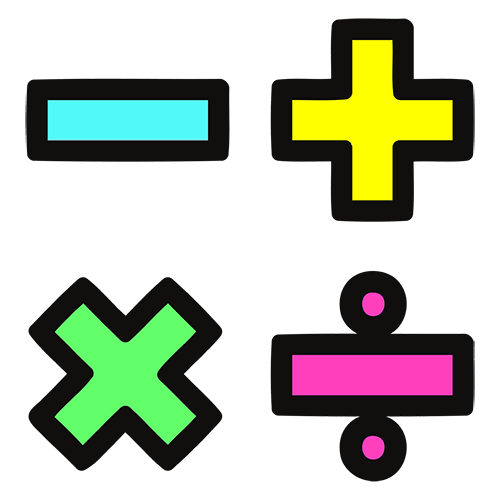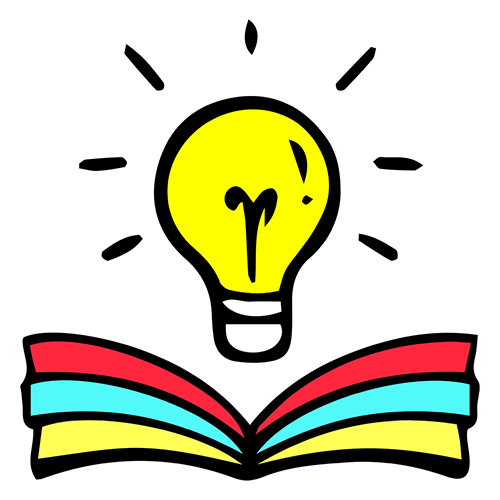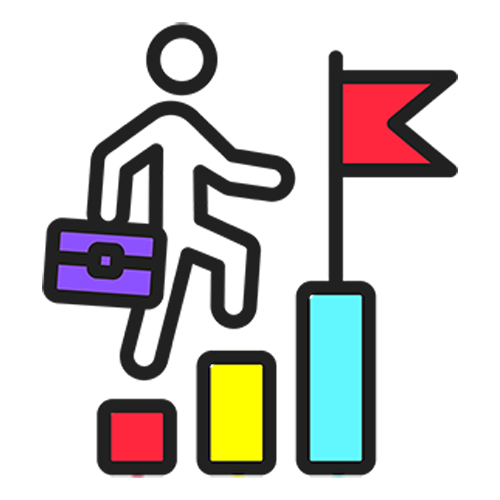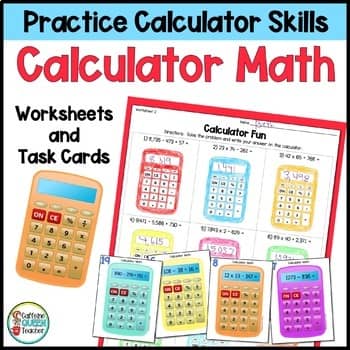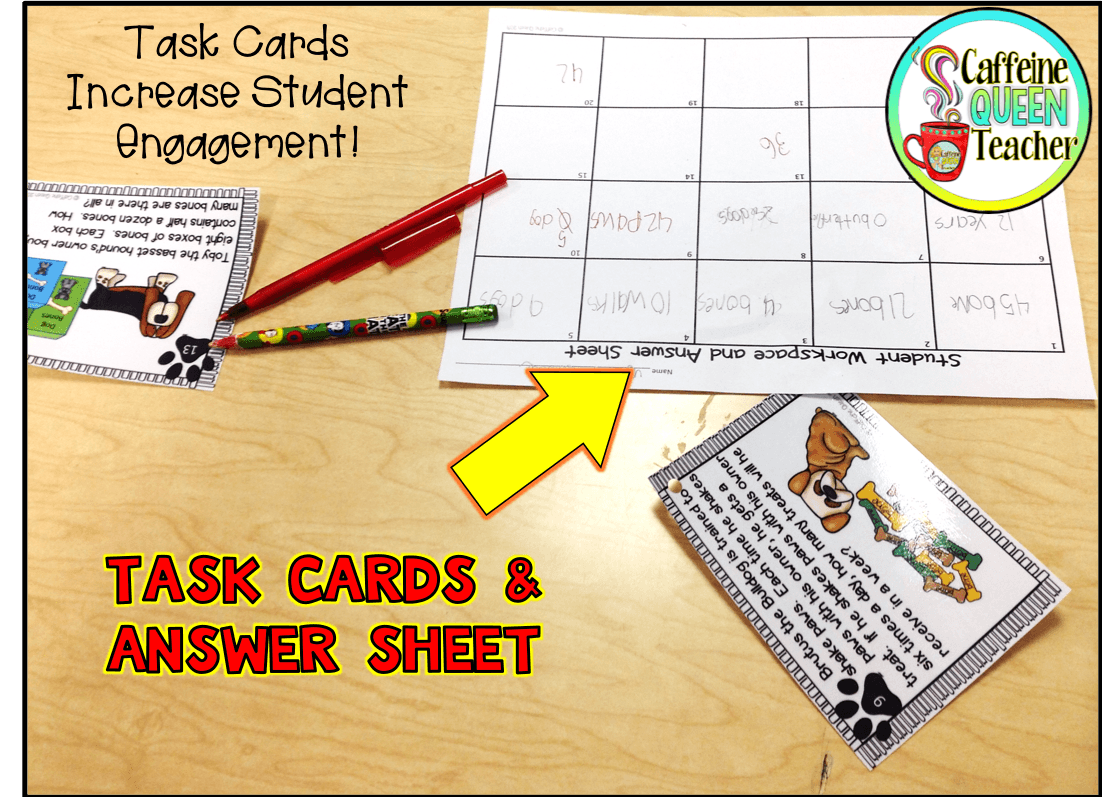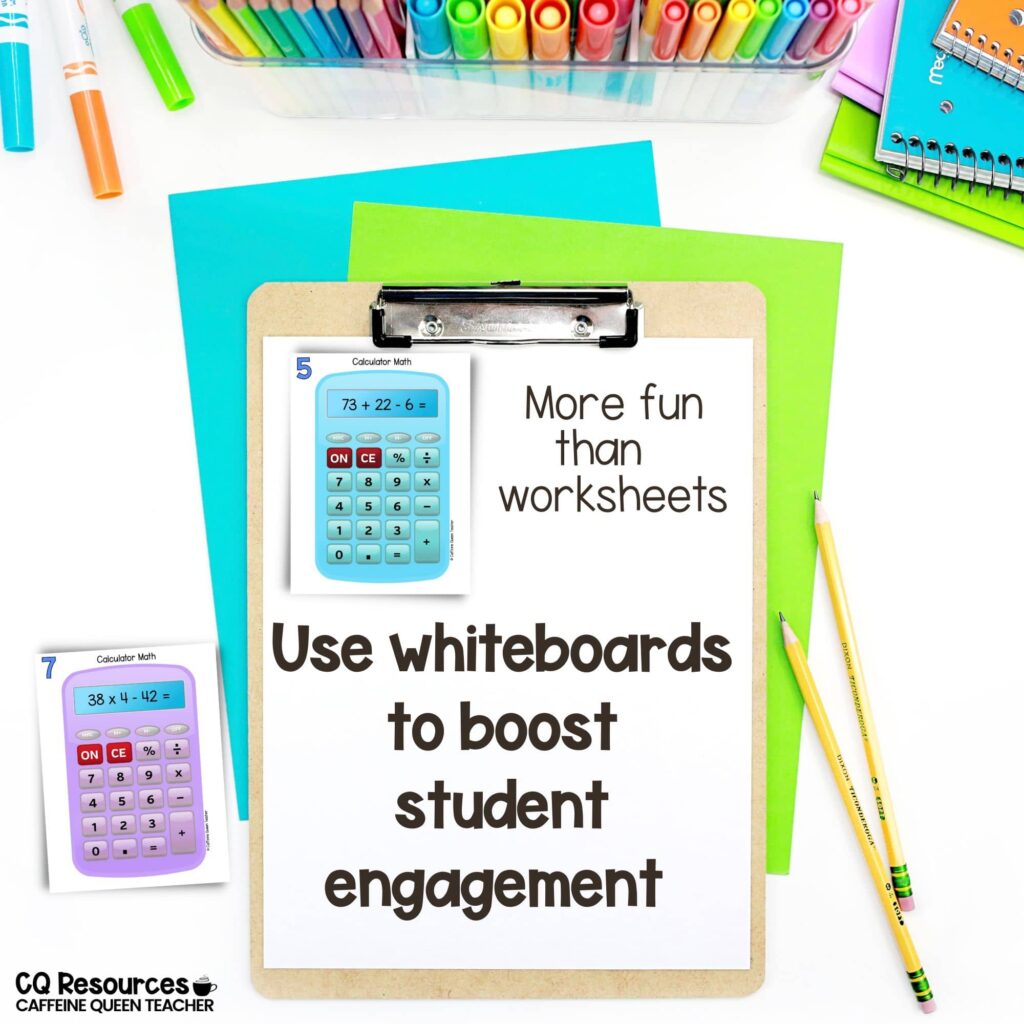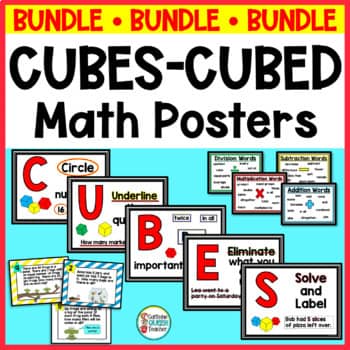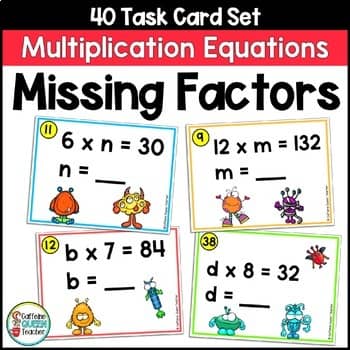Here’s a quick, easy guide to energizing your lessons with task cards. Keeping students engaged in your lessons can be easier than you think – try these simple teaching tweaks today.
As I passed out the worksheets, I heard mumbling and grumbling, and finally, “This is boring. Can we do something fun?”
Truth be told – I wasn’t very excited either. That’s when a terrible, horrible, no-good, very bad thought hit me like a ton of bricks.
I was a boring teacher. Wait, Me?!?!
Starting at that moment, the search was on for fun, new ways for students to practice and reinforce skills.

Don’t worry – good news! I learned a secret for keeping students engaged that’s kinda easy!
With a few tweaks and a little differentiation, task cards are a perfect tool to shoot teaching and learning through the roof!
Task Cards for Student Engagement
What are Task Cards?
Think of task cards as “bite-sized” worksheets. They’re like worksheets morphed into small, fun index cards. Usually, there’s one question per card (or one story or one math problem), which is less overwhelming to students. The cards are often brightly colored, eye-catching, and fun to look at.
Task cards are numbered, similar to questions or problems on a worksheet. But the cards don’t need to be completed in numerical order. Sometimes, task cards are purposely not completed in order for differentiation or to cut down on the number of problems students are assigned.
Task Cards to Differentiate for Students
One easy way to differentiate for student needs with task cards is by having students complete different cards. For example, students might be assigned only the odd/even-numbered cards, or only the first 10, etc., while other students complete fewer or more cards.
Another differentiation method is using different task card sets simultaneously by students within the same class. For example, some students might work on division facts task cards while others are solving long division cards.
Many task card sets are already differentiated by the task card author when you buy them.
Some task cards become more difficult as the number on the card increases. Some sets may be differentiated by odd or even numbers (such as the evens are easier than the odds). Other task card sets use different colors to indicate difficulty level, which is less noticeable by students.
The task card set pictured above is differentiated based on the color of the star in the upper left-hand corner of the card. Students can be instructed to complete only the orange stars or only the purple stars.
Preparing to Use Task Cards
There are tons of task cards available at TPT. A smart way to save on printing costs is to print the task cards in black and white onto colored paper to add pizzazz or as a way to differentiate. After they’re printed, you can laminate them before cutting to save time.
After laminating, I hole-punched my cards in the upper left-hand corner and put them on a book ring, key ring, or even curtain rings, which are far cheaper!!!
You can store them in coupon holders or recipe boxes. I’ve seen them stored in photo albums and on photo saver sheets. Cheaper options include pencil cases, baggies, folders, and envelopes.
Where do students write their answers?
Students write their answers on answer sheets, also known as recording sheets or workspaces. There are many styles of answer sheets, but most consist of a numbered box for each task card and space for students to show their work.
I’ve found that passing out an answer recording sheet makes the assignment more official, and students are more likely to turn it in than when they use a blank sheet of notebook paper.
Great Ways to Use Task Cards for Student Engagement
1. As an Alternative to a Worksheet
A basic, quick, and easy way to use task cards for student engagement is to simply give each student one or two cards at a time. After students complete their cards, they trade with a partner, who then completes those same task cards. Students then compare answers. If their answers are different, they work together to find mistakes and correct them before getting new cards. Students enjoy working with partners and gain valuable cooperation skills.
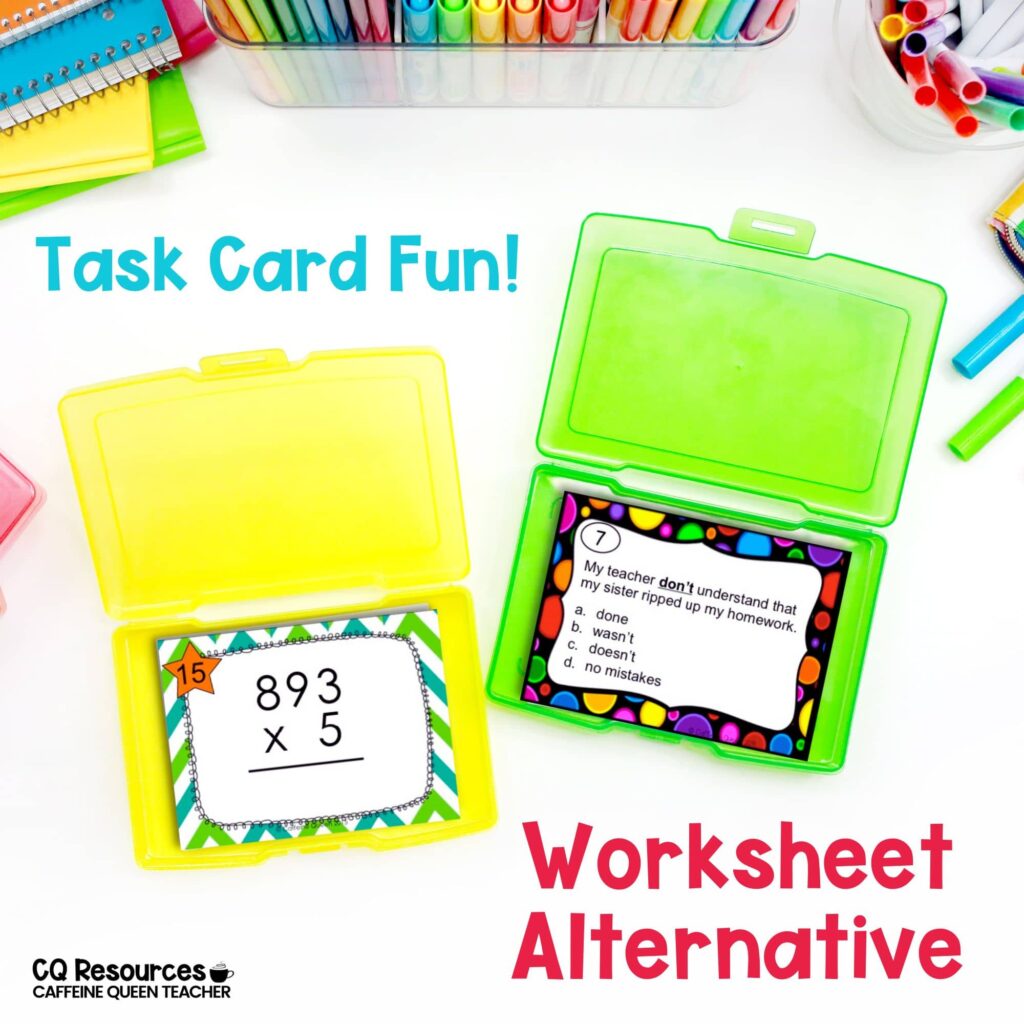
2. In Learning Centers
Centers allow teachers to differentiate instruction for all students, from those requiring extra help on particular concepts to others who are ready to take on more challenging assignments.
With flexibility in working time as well as digital or printed activities, learning centers give educators an efficient approach. Task cards provide a unique way of focusing skill development while allowing students to work independently or collaboratively with classmates.
Keeping track of student progress is easy with these simple techniques. For example, encourage students to show you their work after they finish a certain number of cards. Students could also check their own answers using an answer key kept in an “Answer Folder” or manila envelope, away from peeking eyes.
For example, you might ask a student to complete ten cards. After they finish, the student can “flash” you their work to show they’ve finished. You can give a thumbs up (which means “Get the answer sheet out and check your work”), or thumbs down (which means “Nope – try again.”) Students can check their work themselves.
Hint – To save paper, experiment with sheet protectors or laminated cards and dry-erase markers for centers/station work.
3. Individual or Small Group Work and Remediation
Task cards are wonderful for remediation because they can be individualized to focus on students’ weak areas.
Hint – Once task cards are laminated, they can be ready at a moment’s notice allowing you to change cards as students’ needs change.
4. Task Cards Can Be Given as Homework
Simply copy task cards onto both sides of regular paper. You can cut them apart or simply use full-sized paper. Assign as much or as little as needed. Homework can be different for each student based on individual needs.
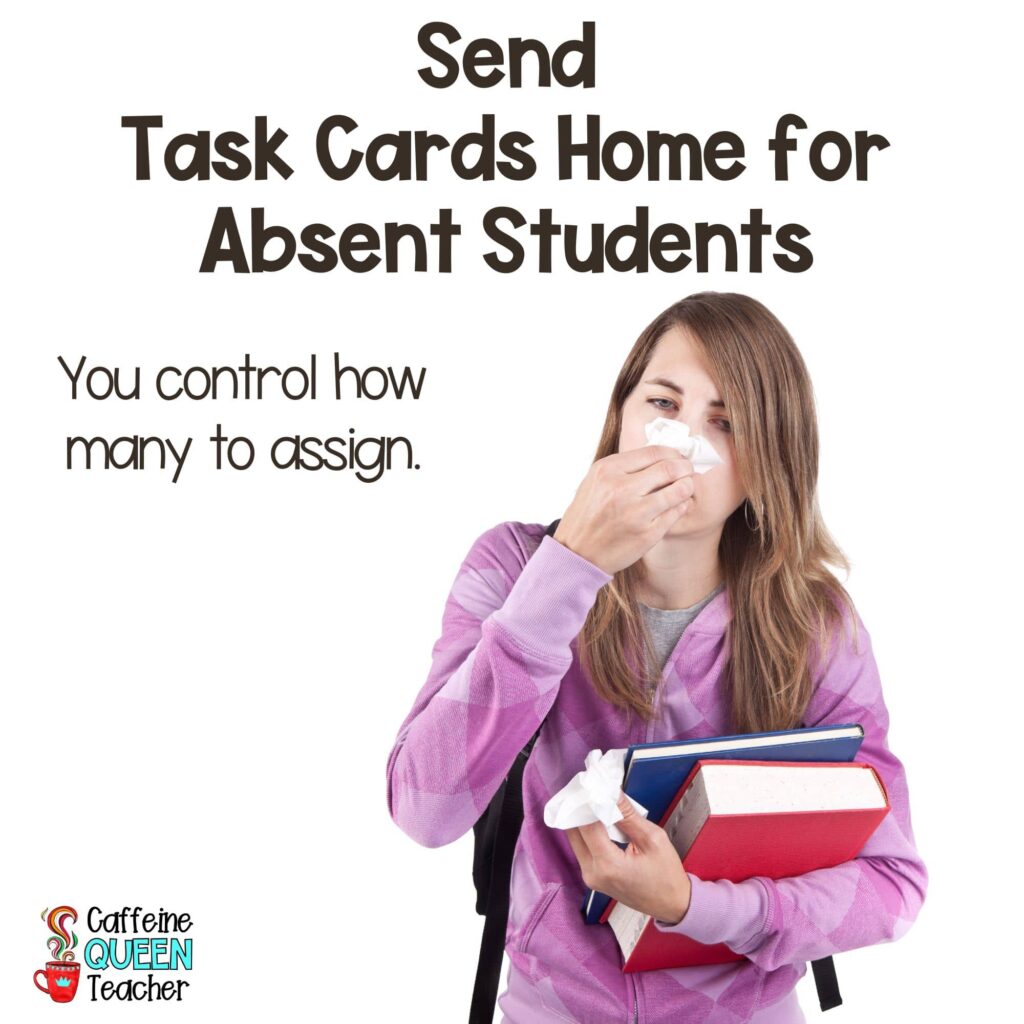
Laminated task cards can be given as homework and sent home in a manila envelope along with a dry-erase marker, making them more fun. Depending on the situation, I’ve sent home a copy of the answer key in a sealed envelope so that parents can work with their child.
Hint – One word of caution, your cards and markers may be returned to you in “less-than-perfect” condition.
5. Exit Tickets
Task cards make easy exit tickets by copying the cards onto plain white copy paper and then cutting them apart. Instruct students to turn in the exit ticket as they leave the classroom.
This is a great way to differentiate easily to meet the needs and abilities of your students.
Hint – Exit tickets make a quick, easy formative assessment.
6. Morning Bell Work
Assign one or more task cards by placing cards on student desks before school or instruct students to select their own cards as students enter the room before class.
7. Wall work or Scavenger Hunt Game
If you search the internet or Pinterest, you’ll find photos of task cards taped to classroom walls or hallways with students moving from card to card. Why? Movement. Activity and movement can enhance learning, plus it’s something different. Students enjoy the freedom of moving around rather than being stuck at their desks.

Hint – Give answer recording sheets to students to keep their work organized when using task cards. Typical task card review sheets have boxes or lines by each task card number with room for students to show their work or thinking.
8. Prepare For Assessments (Including State Assessments)
When preparing for any kind of testing, use task cards for student engagement. I’ve used them as a quick review for state tests. Keep review sessions short and sweet – and by sweet, I mean jelly beans.
Some years, my state’s tests hit around Easter, which is prime time for jellybeans. Hard work or a correct answer earns jellybeans – of different brands and flavors! Jolly Rancher or Starburst – Oh, the excitement! Best of all, they’re cheap treats. But even without jellybeans, task card review sessions are more fun than worksheets.
9. Journal pages or Interactive Notebook Pages
Copy the task cards (colored paper could be used), cut them apart, and distribute them. Students can glue (or tape) the top portion of the card into their notebooks to create a flap. Write the answers under the flap.
10. Extra-Credit
Offering extra credit points can be a great motivator for students. It’s up to you to decide how many cards to assign. I’ve had students choose to work on task cards during indoor recess for a couple of bonus points added to their test scores.
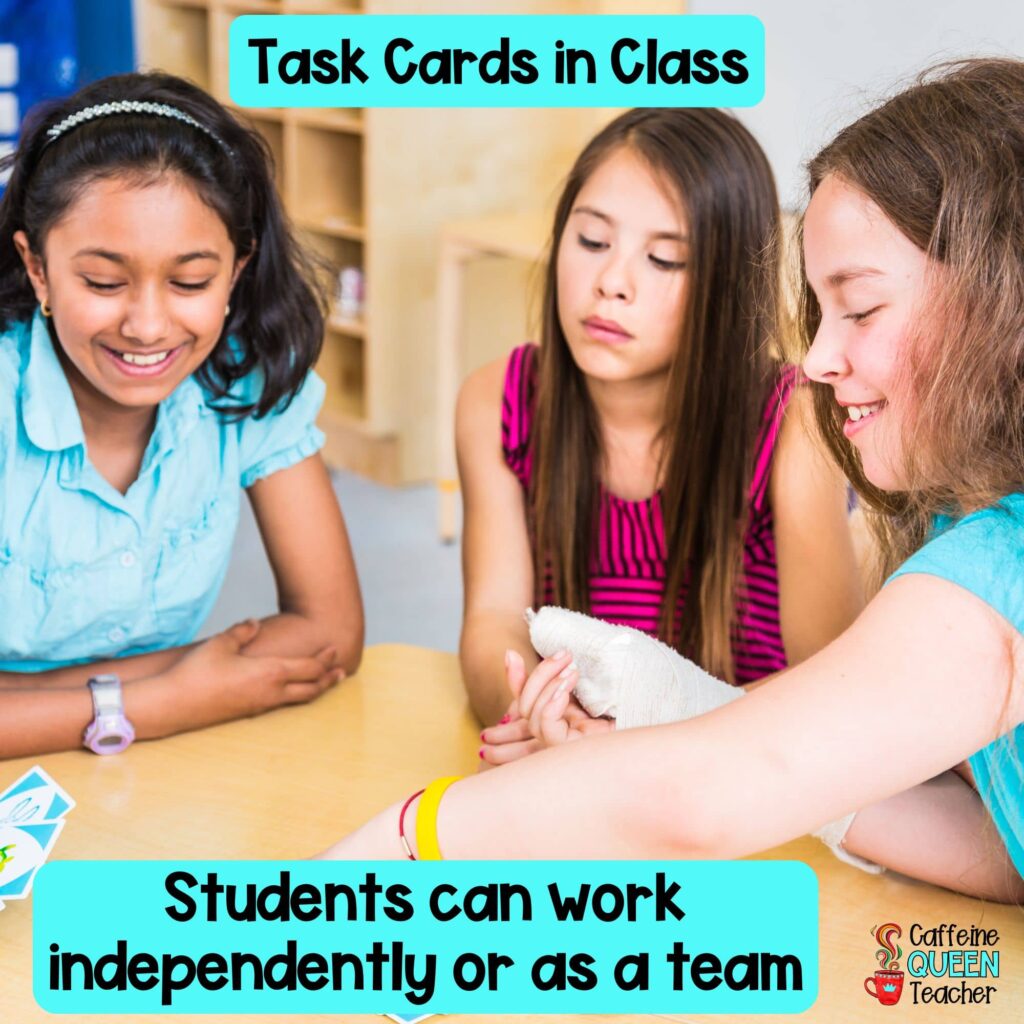
11. Traditional Board Games
Task cards and games are a match made in heaven. Students “earn” their turns by correctly answering a card. They’ll need an answer recording sheet, and all students playing should be working out all of the problems to check each other’s work – and for extra practice!
12. Scoot
Scoot is a popular task card game. Place task cards randomly around the room on student desks, tables, taped on walls – anywhere! Students spread out around the room, one at each task card. They’ll complete the task card at that location. After a short time (when most kids are finished), you’ll announce, “Scoot!” and students silently move to the next location. You’ll want to instruct students beforehand on how to rotate to the next card.
Because most students won’t start with Card #1, they need to understand how to record their answers in the correct boxes. For example, if a student starts with card #17, they need to record their answer in box #17. Some students have trouble and write answers in the wrong boxes.
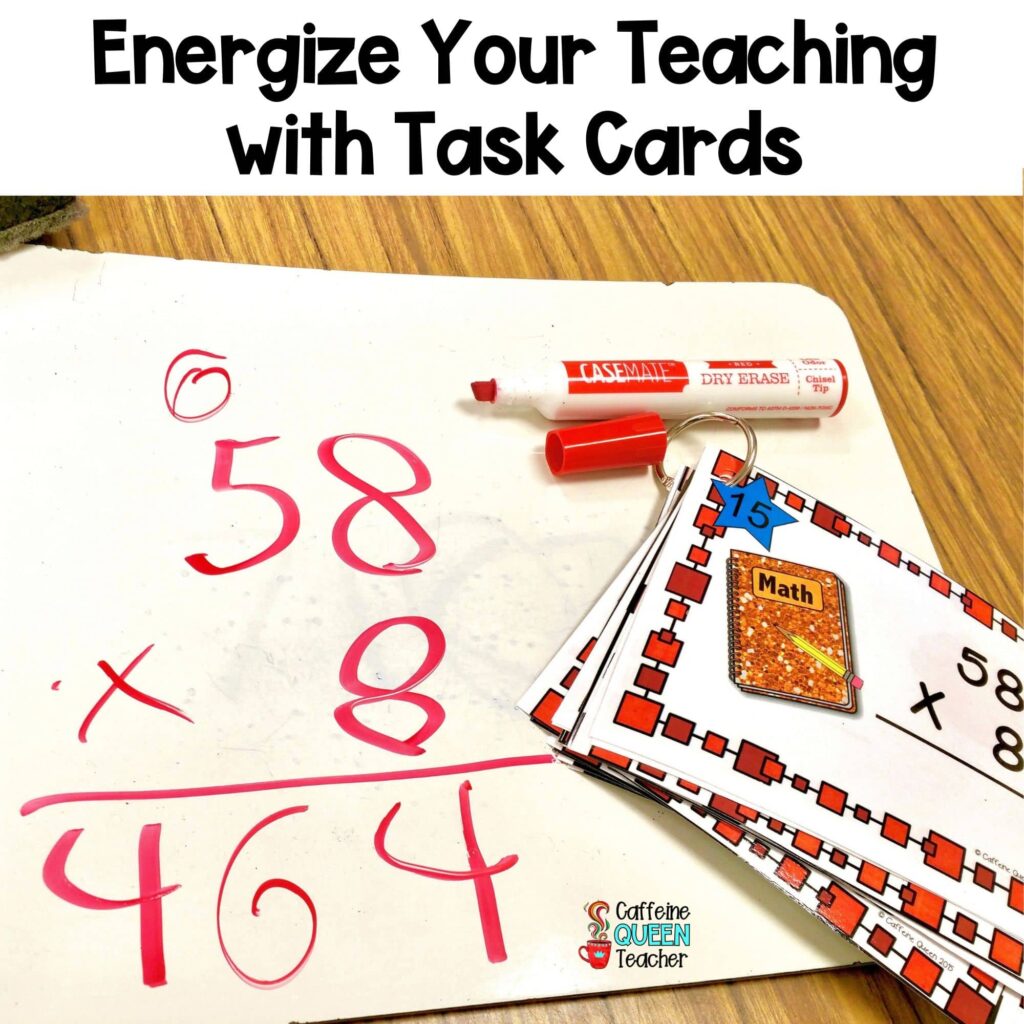
13. Scrambled Eggs
Scrambled Eggs is a game my students and I play for test prep or skill remediation. To begin, divide students into teams of 4 or 5 students. Place a variety of task cards in a basket or bowl for each team – and when I say a variety, I mean that I actually combine several sets of task cards so that several different skills are being practiced during one game.
Students take turns drawing out one task card at a time for the group to work on. When everyone in the group has finished the card, group members discuss their answers and make sure everyone agrees. You’ll love hearing students coach each other and give pointers – very effective! Every 5-6 minutes, allow students to “scramble” either for a new card, a new bowl of cards, or a new team.
14. Planning for Subs is a Snap
Read about how I discovered the HARD way that quick and easy sub plans need to be ready to go at all times. At some point, the day will come when you need a sub and aren’t able to provide plans at a moment’s notice.
Task cards are great for lesson planning when you’re sick, or you’ll miss a day of school. If you do leave task cards for a sub, I suggest using a set of basic task cards that are easy to use and understand. They should cover a skill that your students have already learned but need more practice with.

15. Convert the task cards into Google Slides
If you don’t really want students moving around the room (like Covid social distancing), you can convert the set of task cards into Google Slides for students to complete in school or outside of school. It’s pretty easy, so no need to be intimidated – I’ve got a quick guide to help you out!
This article explains in detail – with pictures – in a step-by-step way how to convert task cards and worksheets for online or distance learning.
You can also upload the file to Google Drive and assign it from there.
Blank Task Cards:
Several sets of blank task cards are for sale at my Teachers Pay Teachers store that are ready for students’ ideas and questions. These blank task cards are meant to be printed out for students to write directly on them by hand (not computer editable).
Using BLANK Task Cards:
My students always loved making their own task cards. I would begin by giving them a blank black-and-white “rough draft” copy. Students can develop their own questions and design their cards in an attractive way. Students can decorate their final copies. Card stock is wonderful for task cards. Colored paper works well, but if students want to color pictures on the cards, you may want to stick with plain white.
Tip – I’d put a time limit on how long students can spend designing their task cards. I’ve had some students who would spend an hour making their task cards artistic masterpieces, which is fine in their free time, so I give them an extra copy to take home.
Check out the task cards in my TPT shop if you’d like to try some blank task cards with your students.
Ideas for Student-Made Task Cards:
*Math – story problems, math facts, equations, properties, graphing, whatever you are learning about in math. Task cards work well for all areas of math.
*Reading questions – novel studies, non-fiction articles, drawings of important events, characterization, chapter break-downs, vocabulary, drawing/writing about story elements (rising action, climax), illustrations, etc.
*Writing – Students can develop questions/pictures/prompts to be used for whole classes or journaling.
*Science/Social Studies/History/Other classes – questions about the chapters, keywords, pictures to represent big ideas/important sections, matching terms and definitions, picture definitions, etc.
*The list of ideas is endless. Students are so creative.
Decide how you want to use task cards in your classroom this week.

